In playing with the order of the tastings this season, we decided to go back across the pond for our October tasting and revisit some bourbon and Canadian whisky. The theme this year was twofold: what kind of weird finishes can we find; and what other whisky is available that we don’t see on the table every day. As usual for our combined North American tastings, we have three American and three Canadian whiskies to compare. We think there’s a little something for everyone here. As a new addition to some tastings (time and effort permitting), we’ve put together a backgrounder on selected topics related to the whiskies you’ll see. Hopefully this piques your interest, as we’ll have more to say about each whisky during the tasting. Find our first installment below:
Canadian Club Chronicles 44 Years Old
“The Whisky Sixes”
What is “regauging”?
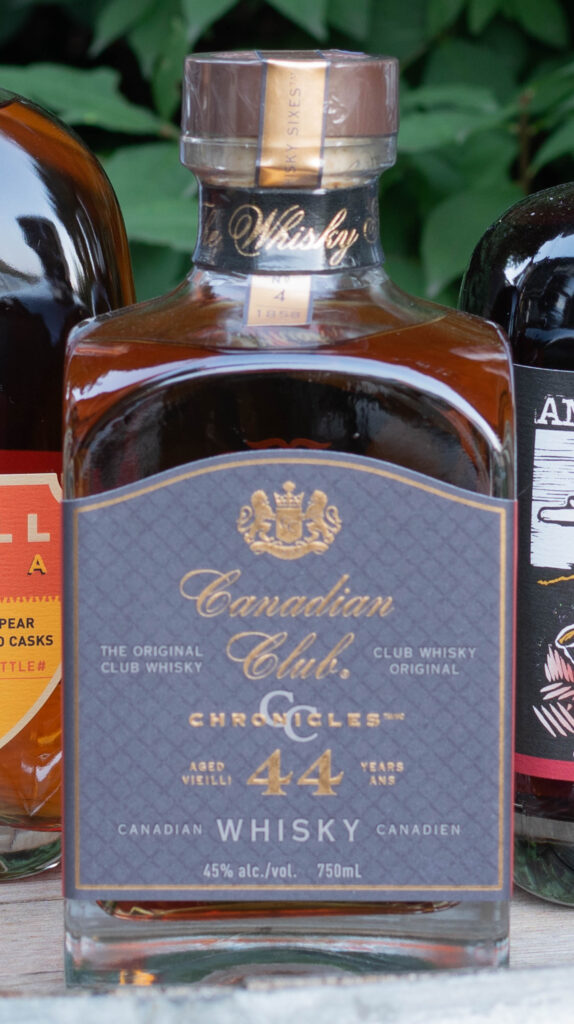
Starting off with something you don’t see every day, we’ve included one of the Canadian Club Chronicles bottlings. These whiskies are from a parcel of 100% corn base whisky distilled in 1977 that Hiram Walker has been releasing on a yearly basis starting in 2017 with a 40 year old bottle. There is speculation that they may have enough whisky to continue yearly editions until a 50 year old appears, but until then and as of this year, this is the oldest age stated Canadian whisky to appear on the market. The barrels this whisky is drawn from have been “regauged” several times. Technically, this simply means the alcohol content and volume of spirit inside has been verified. This also gives the distillery an opportunity to consolidate barrels to maintain a certain fill level and prevent over-aging and certain off-flavours by limiting evaporation and oxidation. Originally casked in white American oak barrels that previously contained rye whisky, this spirit also takes advantage of the infamous “9.09% rule” with some added rye whisky and sherry…
Canadian Legislation: The “9.09% Rule” or “Certificates of Age and Origin for Distilled Spirits Produced or Packaged in Canada Order (SI/2009-61)“
If one delves into the legislation around whisky labelling, we see that the Canadian rules allow for caramel and “flavouring”, which is further defined as wine or spirits, domestic or imported, added to flavour whisky. If the end product is to be sold in Canada, all bets are off, and distillers can add however much flavouring they want, without stating it on the label. BUT, if the whisky is to be exported, then only 1 part in 10 (ie. 9.090%) of flavouring spirit or wine can be added without having to specifically state it on the label. Additionally, adding more than 1 part in 10 means the result can no longer be labelled as Rye Whisky, Canadian Whisky, or Canadian Rye Whisky. Finally, and perhaps most crucially, if only 9.09% of the whisky is flavouring (in terms of alcohol content, this is important as well), that flavouring addition is deemed to have been aged for the same length of time as the age stated for the spirit it has been added to. This means that the flavouring has no impact on the age statement of the whisky, regardless of how old it was!
If the [alcohol] content of the spirits or wine that are added as flavouring does not exceed 9.090 per cent of the total quantity… that resultant product is deemed to have been warehoused for a period equal to the period of warehousing of the spirits to which were added the spirits or wine for blending purposes.
Department of Agriculture and Agri-Food Act, RSC 1985, c A-9, SI/2009-61
There is definitely more nuance to this set of regulations that we’ll dig into at the tasting, but Canadian whisky remains a fascinating segment of the spirits market and there is always much to discuss in how it’s produced, so we’ll stop there for now. We have other whisk[e]y to see! We’ll have more to say about this whisky during the tasting.
Sagamore Spirit Double Oak Rye
Elijah Craig Toasted Barrel
On double oaking and toasted oak finishes
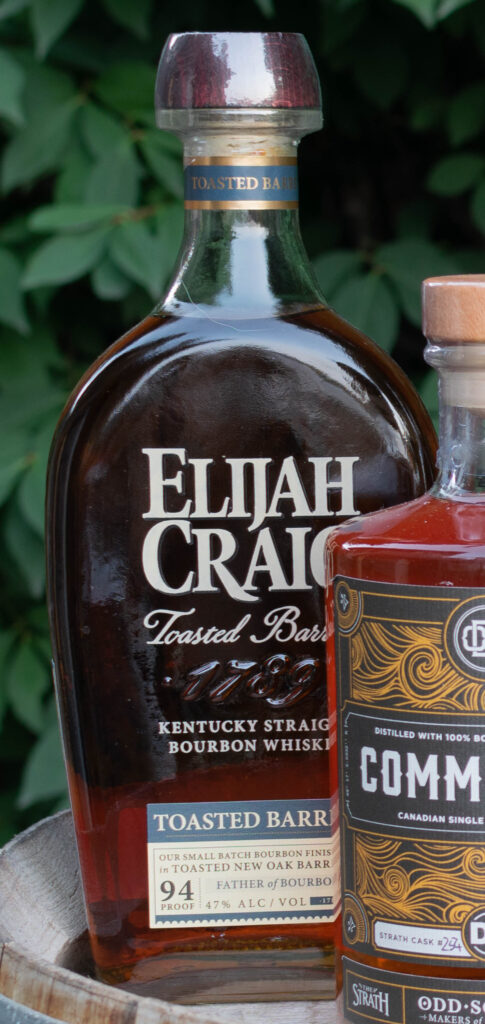
It seems like every bourbon distillery is producing a “double oaked” or “toasted oak” release lately. From the two we have in this tasting to numerous other examples including Basil Hayden Toasted Barrel to Michter’s US-1 Toasted Barrel to Woodford Reserve Double Oaked and then on to Woodford Reserve Double Double Oaked (no joke). So what is “double oaking” and why toasted barrels? Well, the simplest way to explain it would be giving bourbon drinkers more of what they want. More vanilla, more caramel, more coconut and pecan, more of those characteristic notes we look for in bourbon whiskey.
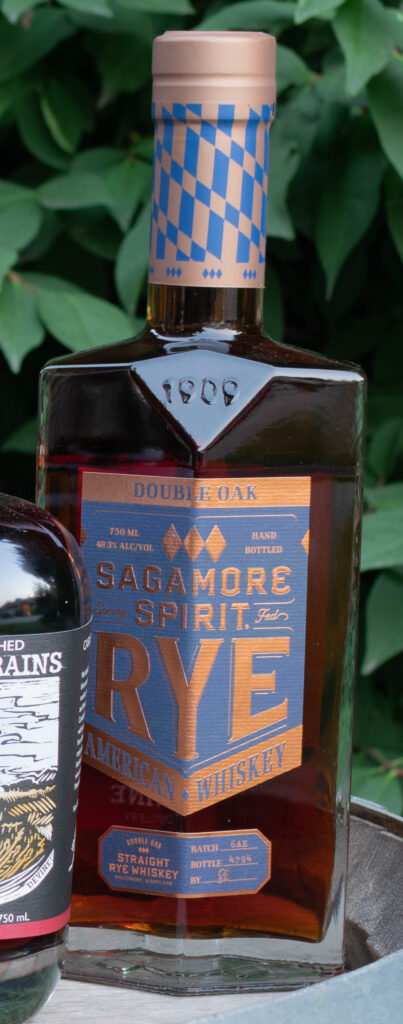
To clarify, toasting a barrel is not the same as charring it, and generally we encounter toasted barrels more often in the world of wine. Charring a barrel is generally a violent process that takes anywhere from 15 seconds (No. 1 char) to a minute (No. 4 char) and introduces surface temperatures of up to 1500 degrees Fahrenheit. You are actually burning the surface of the barrel staves. Toasting, on the other hand, is a much gentler process. It still uses open flame, and is usually implemented at the same time the staves are being bent into a barrel shape, but generally you don’t want the inside surface temperature of the wood to be too much over 200 degrees Fahrenheit. It also takes much longer, on the order of fifteen minutes to an hour. Finally, instead of numbers, toasting is expressed in levels with the most common being light, medium, medium plus and heavy.
Very simply, toasting gives you a lot of additive maturation by breaking down cellulose and lignins in the wood. Sugars, vanillins and oak flavours (and potentially smokey or roasted flavours with heavier toasts) come out of the barrel and into the whiskey. Charring gives you a lot more subtractive maturation, and also colour. Compounds that might lead to off-flavours are pulled out of the spirit and locked into the wood. You can toast without charring, but generally we don’t see barrels that are charred without toasting first.
In our tasting, we have a 4 to 5 year old rye and a roughly 9 to 11 year bourbon both seeing secondary maturation in a medium or medium plus toasted barrel for a shorter period of time. In fact, Sagamore Spirit states 18 months of finishing in special wave stave barrels. This should give us a lot to compare.
Odd Society Commodore Strath Cask #254
DEVINE Wine Cask Finished Ancient Grains
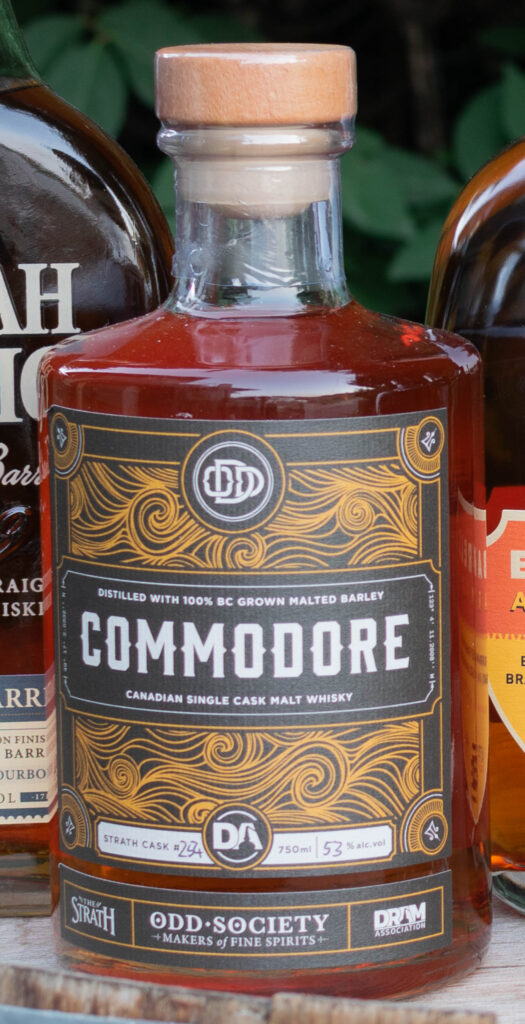
A Tale of Two Strath Casks
We’re cask strength from here on out, and if there are two “local” distilleries we’ve wanted to include in a tasting for quite a while, they would be Odd Society and DEVINE. Odd Society is located in East Vancouver and makes a fantastic range of not only whisky, gin and vodka, but amaro, vermouth and liqueurs as well (their Creme de Cassis and Elderflower are phenomenal).
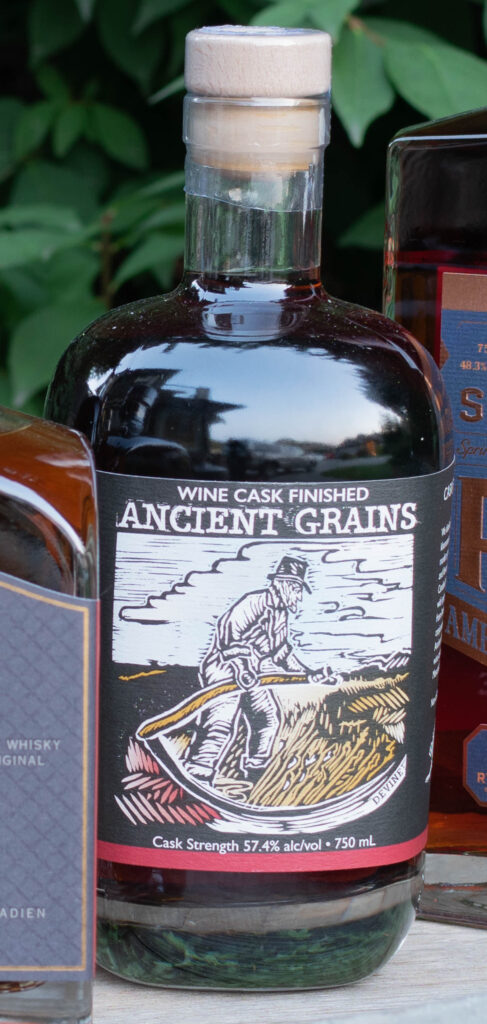
DEVINE Distillery from Saanichton on Vancouver Island has broken the mold with their Ancient Grains whisky made from barley, spelt, emmer, khosoran and einkorn. They also produce a range of spirits including genever, and honey rum.
Both of these casks were picked by The Strath, a liquor store located in downtown Victoria’s historic Strathcona Hotel.
The Commodore is single malt whisky, aged for four years in a No. 1 char ex-bourbon barrel. Harken back to the two toasted barrel American whiskies to see if you can tease out any similarities or absences in barrel character.
The wine cask finished ancient grains whisky from DEVINE is aged in new American oak quarter casks, an entirely different beast. It’s then finished for a year in a French oak wine cask. Before they distilled whisky, DEVINE was a winery, growing multiple varietals of grapes. Among the last vintages produced prior to switching entirely to distilled spirits was a batch of Marechal Foch. Although the grapes are now turned into brandy, the French oak casks used for that final vintage of Foch were used to finish this whisky.
Barrell Armida
Rum, amaro and brandy, oh my!
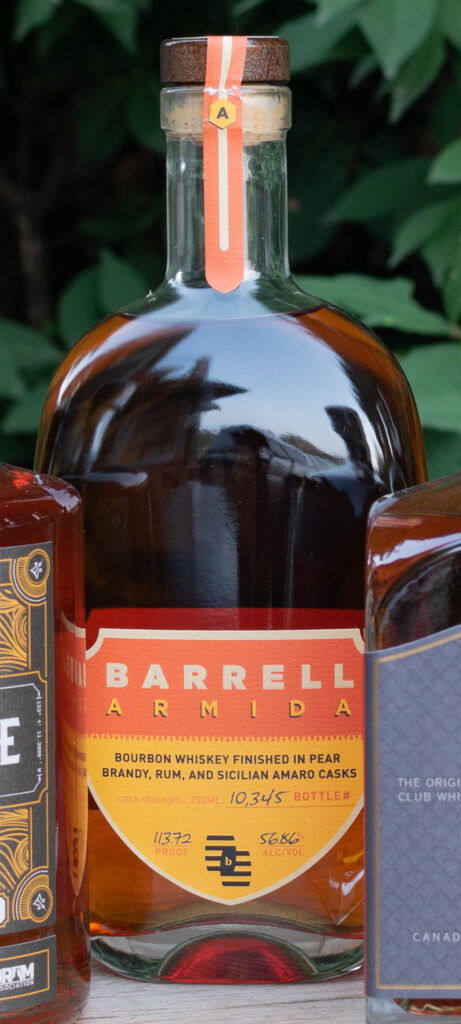
Well, if we want to talk about weird finishes, how about just stacking three layers of finishing together. Our first Barrell product to feature in a society tasting, Armida is a curious blend of bourbon whiskies finished in pear brandy, Sicilian amaro and Jamaican rum casks. The finishes were chosen in an effort to complement some of the flavours in the bourbon and is named after the founder of Barrell Craft Spirits’ mother.
Barrell is a non-distiller producer focused on blending, and tries to draw inspiration from Scotch independent bottlers. They generally release at cask or batch strength in a variety of pricepoints and usually source bourbon from MGP in Indiana; Cascade Hollow (which produces George Dickel and other Dickel products) in Tennessee; and Barton (speculated) in Kentucky, although Barrell has been known to source from over 60 distilleries. They also release American whiskey and rye from MGP, rye from Alberta Distillers in Canada, and rums from Jamaica among others. They also produce the Stellum line of blended whiskies.
Armida belongs to a series of finished whiskies along with others named Dovetail (bourbon finished in wine casks), Seagrass (rye finished in rum, madeira, and apricot brandy barrels), and their newest edition Vantage (bourbon finished in different types of oak: mizunara, french and toasted American).
While a lot is written of Barrell’s transparency in their blending, there is still a lot of mystery behind their products beyond what is legally required. We don’t know which amaro casks were used, and amaro is a pretty broad category, with most areas of Italy having their own regional recipes and interpretations. Simply translated from Italian as “bitter”, amari are a group of herbal liqueurs produced by macerating roots, herbs, and citrus peels in either wine or neutral alcohol and then blending with sugar and bottling between around 20 to 40% ABV. The recipes were based in herbal medicine originating in monasteries or pharmacies in the 1800s and while commonly drunk as an aperitif in Italy, we’ve also seen a boom in amari use as a cocktail ingredient to the present day. The biggest producer of any amaro in Sicily is Amaro Averna (owned by Campari) which produces a sweet and viscous yet mildly bitter neutral spirits-based liqueur.
The origins of the pear brandy and rum barrels are not stated at all, although the majority of rum in Barrell blends are Jamaican rums, so it can be reasonably guessed that the surplus barrels are used in the production of Armida, pushing even more fruity notes to complement the herbaceous amaro finishing. In addition, the age of the whiskies is not stated either; however, the phrase “straight Bourbon whiskey” appears on the website, thus implying an age of at least 4 years.
Signing Off…
Well there we have it, an introduction to the whiskies you can find in our October tasting. We hope to see many of you there, as we take what is sure to be an interesting journey through a slate of unique whiskies.
If you’re able to find any more specific information, or you find an error in the above, I would love to hear from you at andrew@kelownascotchandfinespirits.org!

